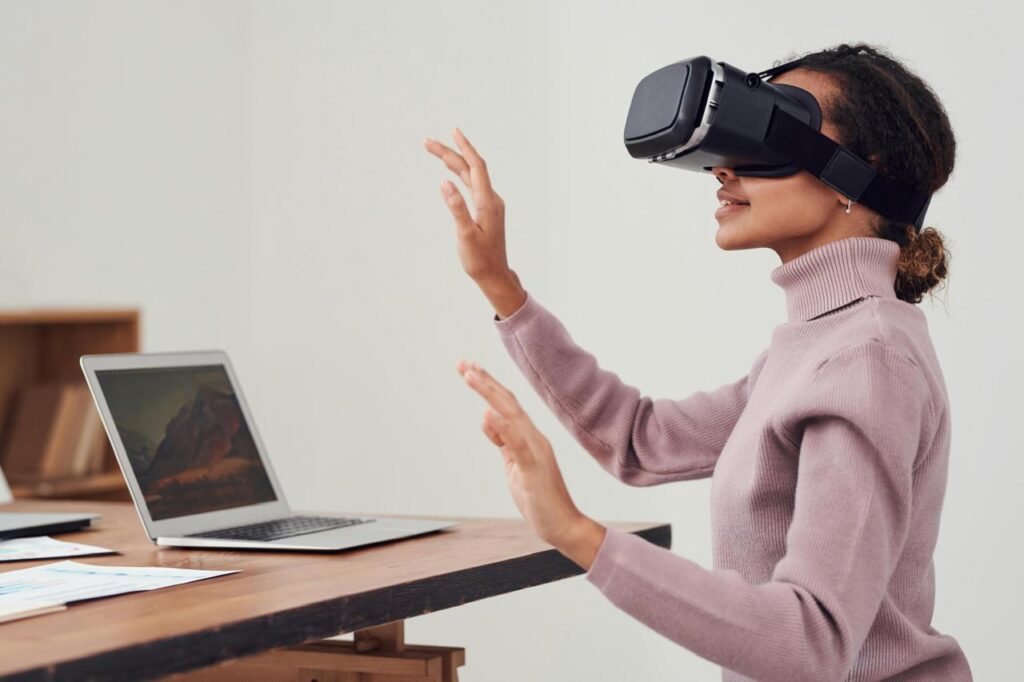Visual technology has undergone significant transformations, shaping how we interact with the world and perceive our environment. From early optical devices to sophisticated digital systems, advancements in this field have revolutionized various sectors, including healthcare, entertainment, and communication. The continuous innovation in visual tech promises to enhance our daily lives, providing clearer, more immersive, and interactive experiences. This article explores the latest breakthroughs in visual technology and their potential impact on society. Understanding these developments helps us appreciate the rapid evolution of visual tech and its far-reaching implications.
Augmented Reality: Blending Digital with Reality
Augmented Reality (AR) represents a breakthrough in visual technology, seamlessly integrating digital elements into the real world. AR applications range from gaming and entertainment to education and professional training, offering immersive experiences that enhance user engagement. Devices such as smart glasses and AR-enabled smartphones allow users to interact with digital content overlaid on their physical surroundings. This technology is also transforming industries like retail and real estate, providing virtual try-ons and interactive property tours. The continuous improvement in AR technology ensures its growing adoption and integration into various aspects of daily life.
Virtual Reality: Creating Immersive Worlds
Virtual reality (VR) is revolutionizing the way you experience digital content by creating fully immersive, interactive worlds. This cutting-edge technology enables users to step into a simulated environment, blurring the lines between the virtual and the real. Through advanced VR headsets and motion tracking, individuals can explore, interact, and engage with 3D environments in unprecedented ways. From gaming and entertainment to education and training, VR is transforming various industries by offering new dimensions of engagement and learning. As visual technology continues to evolve, the potential applications of VR promise to expand, making immersive experiences more accessible and realistic than ever before.
Holography: Bringing Images to Life
Holography, the creation of three-dimensional images, is another exciting development in visual technology. Unlike traditional 3D images, holograms can be viewed from different angles without the need for special glasses, providing a more realistic and engaging experience. Holographic technology is being explored in various fields, from entertainment and advertising to medical imaging and data visualization. The potential for holography to create lifelike representations makes it a valuable tool for presentations, education, and even remote communication. As the technology matures, we can expect to see more practical and widespread applications of holography.
Advanced Imaging Systems: Enhancing Clarity and Precision
The development of advanced imaging systems is significantly improving the clarity and precision of visual data. Innovations such as high-resolution cameras, improved sensors, and sophisticated algorithms enable better image capture and processing. In the medical field, these advancements are enhancing diagnostic capabilities, allowing for more accurate and early detection of diseases. Similarly, in scientific research, advanced imaging technologies facilitate detailed observations and analyses that were previously impossible. The continuous refinement of imaging systems ensures that various industries benefit from clearer and more precise visual information.
Eye-Tracking Technology: Revolutionizing Interaction
Eye-tracking technology is transforming how we interact with digital devices by tracking and responding to eye movements. This technology is finding applications in numerous areas, from enhancing accessibility for individuals with disabilities to improving user experience in gaming and virtual environments. In marketing, eye-tracking provides valuable insights into consumer behavior and preferences, informing more effective advertising strategies. The healthcare sector is also leveraging eye-tracking for diagnosing and monitoring neurological conditions. As eye-tracking technology becomes more sophisticated, its applications and benefits will continue to grow.
3D Printing: Visualizing Designs in Real-Time
3D printing, while primarily associated with manufacturing, is a breakthrough in visual technology that allows for the creation of physical objects from digital designs. This technology enables rapid prototyping and production, which is invaluable in fields like engineering, architecture, and healthcare. For example, in medicine, 3D printing is used to create customized implants and prosthetics, as well as detailed anatomical models for surgical planning. The ability to visualize and produce complex designs in real-time accelerates innovation and enhances precision. As 3D printing technology evolves, its applications will become even more diverse and impactful.
Smart Displays: Enhancing User Interaction
Smart displays are revolutionizing the way we interact with digital content, offering intuitive interfaces and enhanced functionality. These displays integrate advanced touch technology, voice control, and connectivity features, providing a seamless user experience. In the home, smart displays serve as central hubs for managing smart devices, accessing information, and communicating. In professional settings, they enhance collaboration and productivity by supporting interactive presentations and virtual meetings. The continuous advancement of smart display technology ensures that users can enjoy more efficient and engaging interactions with their devices.
Protecting the Innovations
Protecting the innovations in visual technology is paramount for sustaining breakthroughs in this dynamic field. Things like an Apple Vision Pro case play a crucial role in safeguarding advanced devices and ensuring their durability and functionality. This specialized case is designed to provide robust protection against external elements while preserving the sleek design and performance of Apple’s cutting-edge visual tech. By investing in this case, professionals and enthusiasts alike can confidently explore new frontiers in visual technology without compromising on device security. This proactive approach not only enhances the longevity of innovative tools but also supports continuous innovation and experimentation in the realm of visual tech, driving forward progress and pushing boundaries in the industry.
Conclusion:
The advancements in visual technology are reshaping how we see and interact with the world, offering more immersive, accurate, and interactive experiences. From augmented and virtual reality to holography and AI-driven imaging systems, these breakthroughs hold immense potential for various industries. As these technologies continue to evolve, their applications will expand, bringing new possibilities and enhancing our daily lives. Embracing these innovations not only enriches our experiences but also opens up new opportunities for growth and development. The future of visual technology is bright, and its impact will be felt across all aspects of society.



